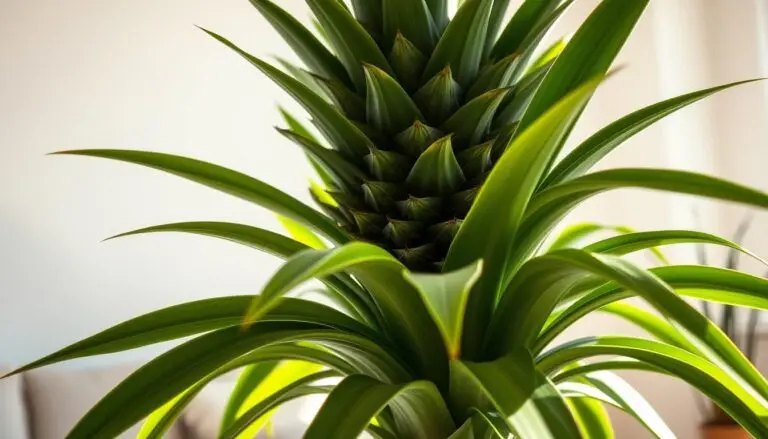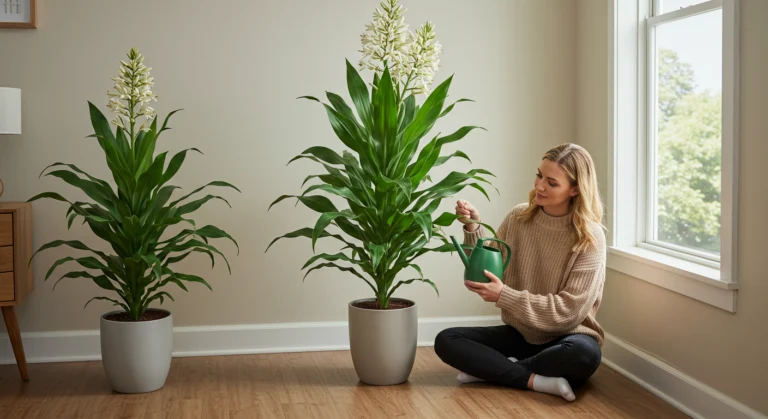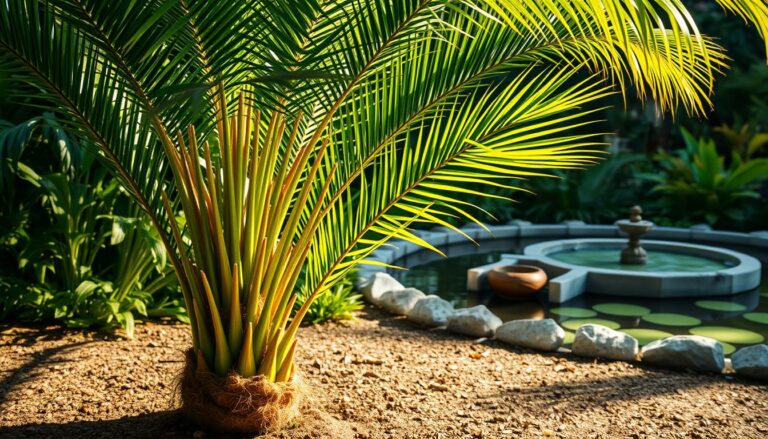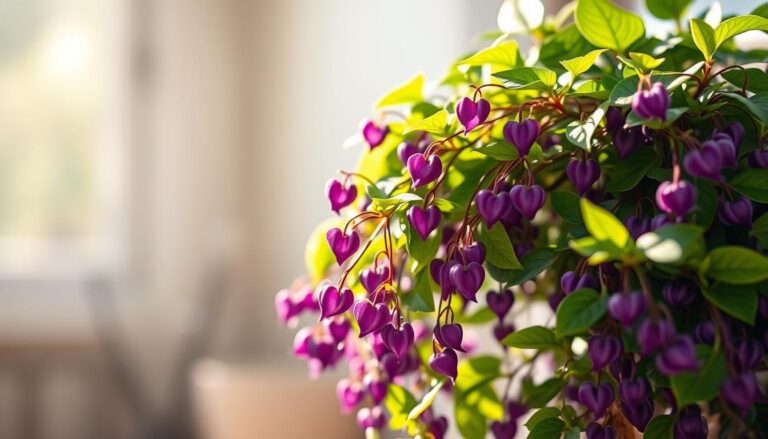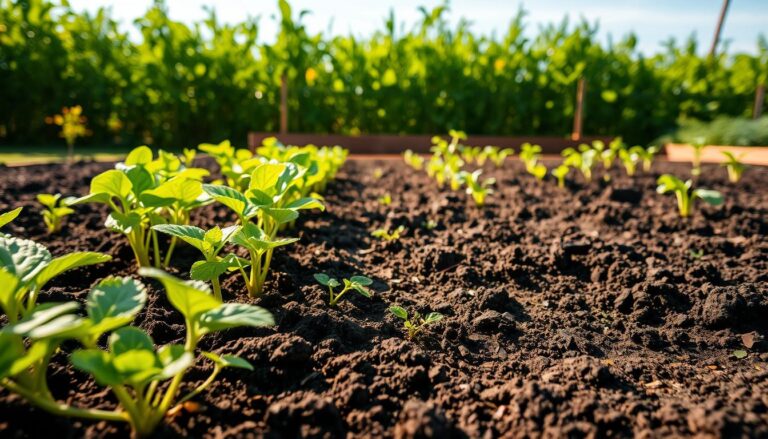how to care for a pitcher plant
Pitcher plants are fascinating, with unique traps to catch and digest insects. They are a great addition to any plant collection. Whether you’re new or experienced, learning about pitcher plant care is key to growing them well.
These plants need specific care due to their unique needs. With over 170 species worldwide, they thrive in precise conditions. You’ll learn about their needs for light, humidity, temperature, and food.
Table of Contents
Understanding Pitcher Plants
Pitcher plants are a unique group of carnivorous plants. They have evolved special ways to survive in poor soil. These plants capture and digest insects, making them very interesting.
There are over 170 types of pitcher plants. They live in many places, from rainforests to mountains. Each type has its own special way of living.
Distinctive Plant Families
- Nepenthaceae: Contains over 140 tropical pitcher plant species
- Sarraceniaceae: Features three genera of North American pitcher plants
- Cephalotaceae: Includes a single unique species native to Western Australia
Unique Carnivorous Characteristics
Pitcher plants have amazing features to survive tough places. Their leaves make pitcher-like traps to catch insects. These traps work in different ways, like:
- Attractive color and nectar
- Slippery inside to keep insects in
- Downward bristles to stop insects from escaping
- Enzymes to break down insects
Fascinating Evolutionary Adaptations
Some pitcher plants have special relationships with animals. For example, Nepenthes lowii attracts tree shrews. These shrews help the plant by leaving nutrients behind.
The evolution of pitcher plants shows nature’s amazing ability to adapt and survive.
Pitcher plants come in all sizes. The smallest is Cephalotus follicularis, and the largest is Attenborough’s pitcher plant, which can grow up to 1.5 meters tall. They amaze scientists and plant lovers.
Ideal Growing Locations
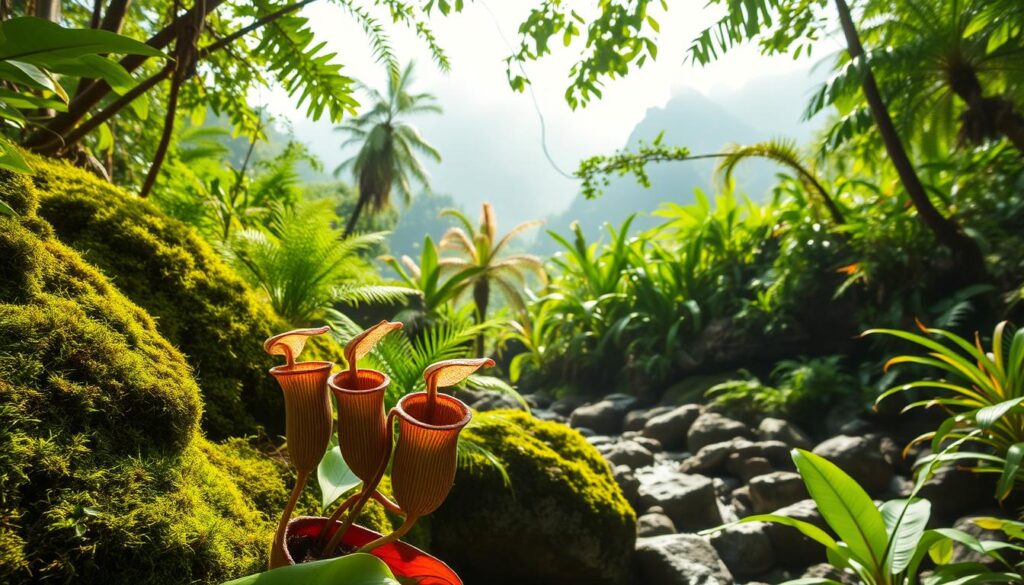
Finding the right spot for your pitcher plant is key to its health. These plants need special conditions to thrive. They might look fragile, but they can do well in the right place.
There are several places where your pitcher plant can grow well. Each spot has its own benefits:
- Outdoor gardens in USDA hardiness zones 3 to 10
- Specialized terrariums with controlled humidity
- Dedicated greenhouse spaces
- Sunny windowsills with direct light exposure
When picking a spot for your pitcher plant, remember these important points:
- Sunlight exposure: Need at least 6 hours of direct sunlight daily
- Consistent moisture levels
- Temperature range between 40-50°F during dormancy
- High humidity environments
Indoor gardening can be tough for pitcher plants. They love the outdoors, where it’s like their natural home. If you’re growing indoors, use grow lights and keep the environment just right.
Pro tip: Always prioritize bright, direct sunlight and consistent moisture when selecting your pitcher plant’s growing location.
Light Requirements and Exposure
Knowing what light a pitcher plant needs is key for its health. These plants are different from regular houseplants. They need special care with light.

Pitcher plants love light that’s similar to their natural home. They need a mix of bright and shaded light. This is because they come from tropical places with filtered sunlight.
Natural Light Sources
Here are tips for natural light:
- Look for indirect sunlight all day
- Morning sun is gentler than midday sun
- They need 12-14 hours of light each day
Artificial Lighting Options
For growing pitcher plants indoors, use the right artificial light:
| Light Type | Efficiency | Recommended Use |
|---|---|---|
| LED Grow Lights | High | Most energy-efficient, specific wavelength emission |
| Fluorescent Lights | Medium | Good for beginners, higher energy consumption |
| HID Lights | Intense | High-intensity, requires careful heat management |
Signs of Improper Lighting
Signs your pitcher plant is stressed from light:
- Leggy growth means too little light
- Leaf bleaching is from too little light
- Brown leaf tips are from too much light
- Not enough light means fewer pitchers
“Light is the lifeblood of carnivorous plants. Understand its nuances, and your pitcher plant will thrive.” – Botanical Expert
By managing your pitcher plant’s light, you’ll help it grow well. This will make your plant look vibrant and healthy.
Temperature and Climate Conditions

Knowing the right temperature for your pitcher plant is key to its health. Each type of pitcher plant has its own climate needs. It’s important to understand what your plant prefers.
Most pitcher plants do well in temperatures between 70 and 80 degrees Fahrenheit. They like a mix of warm days and cooler nights. This is similar to their natural home.
- Tropical pitcher plants (Nepenthes) flourish at temperatures between 24 and 29 degrees Celsius
- Native pitcher plants require a three to five-month winter dormancy period
- Nighttime temperatures should ideally range between 10 and 21 degrees Celsius
Each pitcher plant type can handle different temperatures. For example, Sarracenia purpurea subspecies can handle deep freezes. But tropical varieties need warmer temperatures. The main thing that tells them to go dormant is the length of daylight, not just the temperature.
When growing pitcher plants indoors, keep the temperature steady. Use artificial light to control the day and night hours. This helps your plant grow well.
Pro tip: Watch how your plant reacts to temperature changes. Adjust as needed to keep it healthy.
Soil Requirements and Potting Medium
Understanding the soil needs of pitcher plants is key to their care. These plants need special growing conditions, unlike regular houseplants. The right soil mix is crucial for their health and growth.

Pitcher plants do best in low-nutrient, well-draining soil. This soil should be like their natural habitat. Their roots need air and moisture but should not be too wet.
Recommended Soil Mixtures
To create the best soil for your pitcher plant, mix:
- 2 parts sphagnum moss
- 1 part perlite
- 1 part pine bark
This mix helps with drainage and prevents the soil from getting too dense. This is important for the plant’s roots.
Drainage Considerations
Drainage is key for pitcher plants. Too much water can cause root rot and diseases. Use pots with many drainage holes and choose a substrate that drains water quickly.
| Soil Characteristic | Ideal Condition |
|---|---|
| pH Level | 5.0 – 6.0 (Acidic) |
| Moisture Retention | Light and Airy |
| Nutrient Content | Low |
Repotting Guidelines
Repot your pitcher plant when its roots start coming out of the drainage holes. Pick a pot that’s 2-4 inches bigger in diameter. The best time for repotting is in the spring or early summer when the plant is actively growing.
“The key to a healthy pitcher plant is mimicking its natural growing environment through careful soil selection and management.” – Carnivorous Plant Experts
Pitcher plants get most of their nutrients by catching insects. So, their soil mix should support their roots without too much fertilizer.
Watering Your Pitcher Plant

Caring for a pitcher plant is all about finding the right balance of moisture. These plants are different from regular houseplants because they need specific watering. Knowing how to water them right will help your plant grow well and make lots of pitchers.
Keeping the right amount of moisture is key. Here are some important tips for watering:
- Water when the top of the potting medium feels a bit dry
- Use filtered, distilled, or rainwater to avoid mineral buildup
- Make sure the water drains well after each time you water
- Don’t let the soil get too dry
Humidity is also very important for your pitcher plant. They need the air to be more than 50% humid to grow well. To keep the air moist, put your plant on a pebble tray with water. Make sure the pot is above the water line.
Pro tip: A 5-inch pitcher plant needs about 0.5 cups of water every 7 days, unless it’s in direct sunlight. Look out for yellow or curling leaves, which mean it might need more water.
Proper watering is the lifeline of your pitcher plant’s survival and growth.
Root rot is a big problem for pitcher plants. To avoid it, make sure the soil drains well and don’t let the plant sit in water. Repot your plant every year or when it gets bigger to keep the soil fresh and the plant happy.
Humidity Management
Knowing the humidity needs of pitcher plants is key to growing them well. These plants need specific moisture levels to thrive. They grow best in conditions that help them make their unique pitcher-shaped traps.
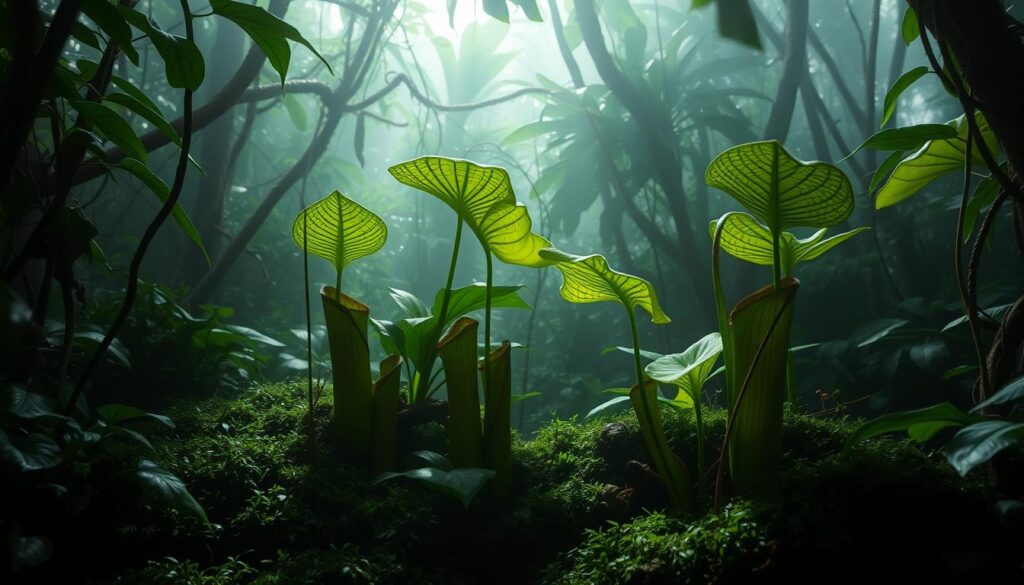
Different pitcher plants need different humidity levels. Most need high moisture to stay healthy and grow. The right humidity can make a big difference in how well your plant does.
Optimal Humidity Levels
Most pitcher plants do best in humidity between 50% and 80%. Here’s a look at what different species need:
- Nepenthes species: 60-80% relative humidity
- Sarracenia species: 50-70% relative humidity
- Tropical pitcher plants: Prefer higher end of humidity spectrum
Methods to Increase Humidity
There are several ways to keep the right humidity for your pitcher plant:
- Use humidity trays with pebbles and water
- Group plants together to create microclimate
- Employ a cool or warm mist humidifier
- Mist plants early morning or late afternoon
Monitoring Humidity Levels
| Humidity Indicator | Action Required |
|---|---|
| Brown leaf tips | Increase humidity |
| Wilting | Check moisture levels |
| Reduced pitcher formation | Adjust environmental conditions |
Remember, too much humidity can harm pitcher plants. It can cause mold or root rot. Always watch your plant and adjust humidity as needed.
Feeding and Nutrition
Understanding your pitcher plant’s nutritional needs is key. These plants thrive in poor soils and get most of their food from catching insects. While they can catch their own prey, a little extra help can make them grow stronger and produce more pitchers.
Feeding your carnivorous plant needs careful thought. In spring and summer, you can feed them whole insects like fruit flies. If they can’t catch prey, dried insects can be added to their pitchers every few weeks. But, be careful not to use too much fertilizer, as it can harm them.
For the best nutrition, use special fertilizers with low nutrients. Look for ones with a 9-4-9 or 20-10-20 ratio. Mix these fertilizers to a quarter or half strength and use them sparingly. Too much fertilizer can cause problems like yellow leaves or brown tips. Most carnivorous plants only need to be fed two to three times a year.
Remember, your pitcher plant’s natural food gives it important nutrients like Nitrogen and Potassium. By keeping their diet simple and natural, you’ll help them grow well and have strong, healthy pitchers.


